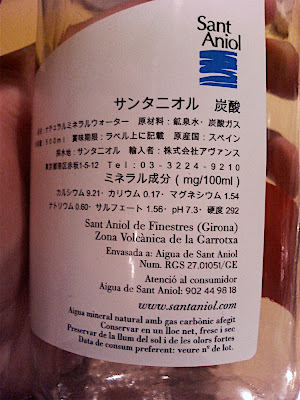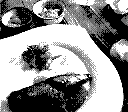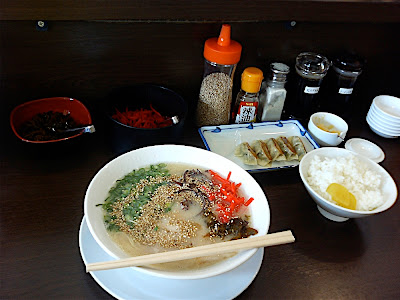El otro día fuimos a cenar a un restaurante español en Fukuoka. La comida estaba buena, y se notaba que tenía el sabor más suave para hacerla más agradable al paladar japonés, aunque a mí me gusta un poco más salado.
La paella que pedimos tenía una buena cantidad de arroz para su diámetro (menos de un centímetro), pero también tenía doce veces más otras cosas (gambas, pescado, mejillones…) que las que creo yo que necesita un buen arroz. Poque lo que tiene que estar bueno en la paella es el arroz.
先日、福岡でスペイン料理のお店に行ってきました。料理の味は日本人の口に合うように薄めになっていました。美味しかったけど、僕はもうちょっと塩辛い方がいい。
パエリヤは、フライパンの大きさに比べてご飯の量がちょうどよかった(深さ:1センチ以下)と思う。しかし、具(エビ、ムール貝、魚など)は自分の「ちょうどいい」と思う量より12倍ぐらい多かった。地元のパエリヤで一番美味しいのはご飯です。
The other day we went for supper to a Spanish restaurant in Fukuoka. Food was good, and the general flavor was a bit dimmed out in order to fit the delicate Japanese taste. I like it a bit saltier, anyway.
The paella we had had the correct amount of rice for the pan’s size (less than 1 cm deep), but I felt it also had a (12 times) too big amount of the other stuff, namely shrimp, fish and mussels. In a good paella, I think the yummy must be mostly at the rice.
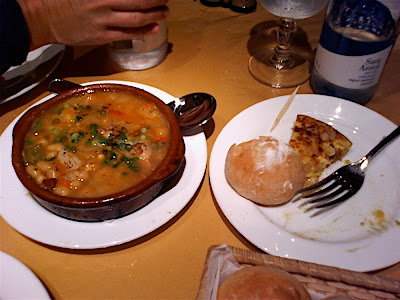
Lo que me pareció más curioso de la cena fue el agua mineral. Normalmente, si pides agua en un restaurante Japón te la ponen del grifo (filtrada o algo) y es gratis. Pero en este aspecto el restaurante al que fuimos era más español, y nos sacaron unas botellas de agua mineral que obviamente fueron a parar a la cuenta.
一番驚いたのは、ミネラルウォーター。お水でいいと言ったら、スペインみたいにミネラルウォーターが出て来た。
Most surprising was the mineral water. You can get (filtered) water for free in most Japanese restaurants, but this one pulled a Spanish joke on us and charged for mineral water.
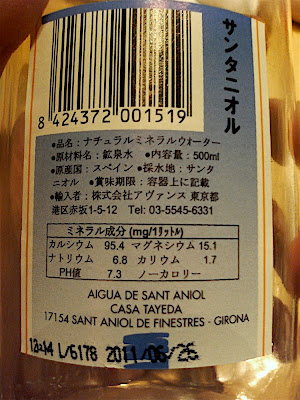
Si os fijáis en las etiquetas (había dos tipos) se trata de agua importada desde España. Desde un pueblo de Girona, para más señas. Y en las etiquetas estaba casi todo en japonés, excepto algunas frases en catalán. Me gustó mucho leer algo en catalán encontrado por casualidad en Japón, porque normalmente no tengo la oportunidad de usar este idioma.
ラベルを見ると(2種ありました)、スペインのピレネー山脈から輸入された水でした。ラベルはほとんど日本語になっていたけど、カタルーニャ語のままで残っていた文章もありました。カタルーニャ語というのはスペインの一部でしゃべられる言語で、スペイン語の方言ではなく、別の言語です。
But I loved the mineral water bottles. It was water imported from the Spanish Pyrenees, but text in the label was mostly written in Japanese. There was some text left in Catalan language, but no Spanish.
